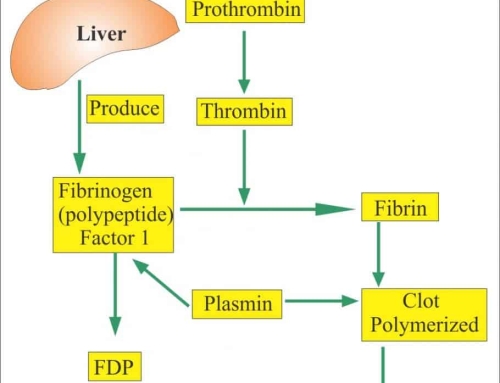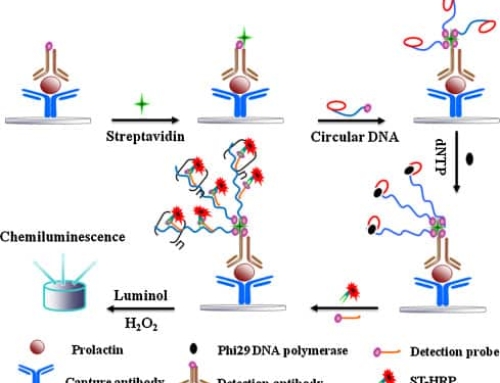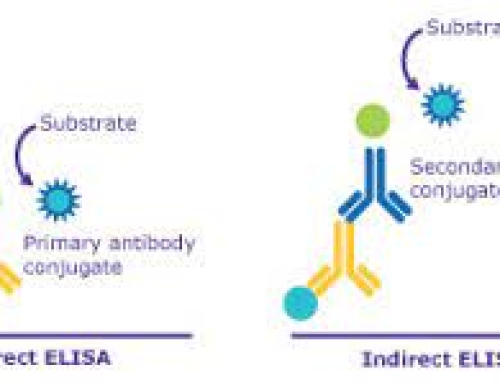ELISA (enzyme-linked immunosorbent assay, enzyme linked immunosorbent assay) refers to a qualitative and quantitative method for detecting the immune response by binding soluble antigens or antibodies to solid-phase carriers such as polystyrene.
Basic principles:
①bind the antigen or antibody to the surface of some solid carrier and maintain its immune activity.
②An enzyme-labeled antigen or antibody that binds an antigen or antibody to an enzyme that preserves both its immune and enzymatic activity.
③ At the time of determination, the tested specimen (measuring the antibody or antigen) and the enzyme labeled antigen or antibody were reacted with the antigen or antibody on the surface of the solid carrier according to different steps. The antigen-antibody complex formed on the solid carrier was separated from other substances by washing, and the amount of enzyme combined on the solid carrier was proportional to the amount of substance tested in the specimen.
④After adding the substrate of the enzyme reaction, the substrate is catalyzed into a colored product, and the quantity of the product is directly related to the quantity of the substance tested in the specimen, so it can be analyzed according to whether the depth of the color reaction is qualitative or quantitative. Because of the high catalytic efficiency of the enzyme, it can be greatly amplified effect, so that the determination method achieves a very high sensitivity.
Sandwich of Double antibody
The sandwich method is often used to detect macromolecular antigens. The general procedure is:
①The specific antibody was fixed on the plastic hole plate and the excess antibody was washed after completion.
②Add the test body to be tested. If the test body contains the antigen to be tested, it will bind specifically to the antibody on the plastic pore disk.
③Wash off the excess body to be tested, add another antigen-specific primary antibody, bond with the antigen to be tested;
④Wash off excess unbonded primary antibody and add secondary antibody with enzyme with a primary antibody bond;
⑤Wash off excess unbonded secondary antibodies, add enzyme substrates to color the enzyme and read the results to the naked eye or instrument.
Indirect
Indirect methods are often used to detect antibodies. The general procedure is:
①Fasten known antigens to plastic pore plates and wash away excess antigens after completion.
②Add the body to be tested. If the body contains a primary antibody to be tested, it will bind specifically to the antigen on the plastic disk.
③Wash off the excess body to be tested, add a secondary antibody with an enzyme, and bind to the primary antibody to be tested.
④Wash and remove excess unbonded secondary antibodies, add enzyme substrates to color the enzyme, and measure the content of the antibody to be measured by using an ELISA reader to determine the absorbance (OD) in a plastic plate.
Competition law
The competition method is a less commonly used ELISA detection mechanism, which is generally used to detect small molecular antigens.
①The specific antibody was fixed on the plastic hole plate and the excess antibody was washed after completion.
②Add the test body to make the antigen and the antibody on the plastic hole disk specific Key knot;
③With the addition of antigens with enzymes, the antigens can also be specifically bonded to the antibodies on the plastic disk. Because of the limited number of antibodies fixed on the plastic disk, the more the amount of antigens in the body, the less the solid antibodies with the antigens with enzymes.
④The enzyme substrate is added to the enzyme to make the enzyme color. When the amount of antigen in the test body is more, the less antigen with enzyme is left in the plastic pore disk, the lighter the color will be.
Note: There are two types of The use of competitive ELISA is generally considered for antigens with monogenic antibodies or for not easily obtaining sufficient purified antibodies to immobilize them on pore plates.





